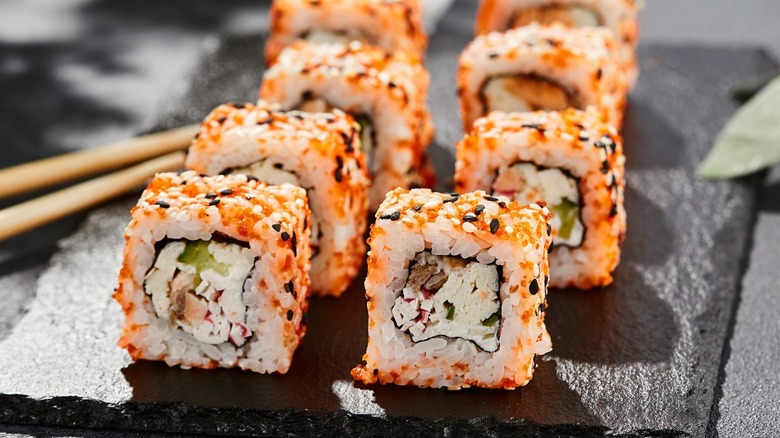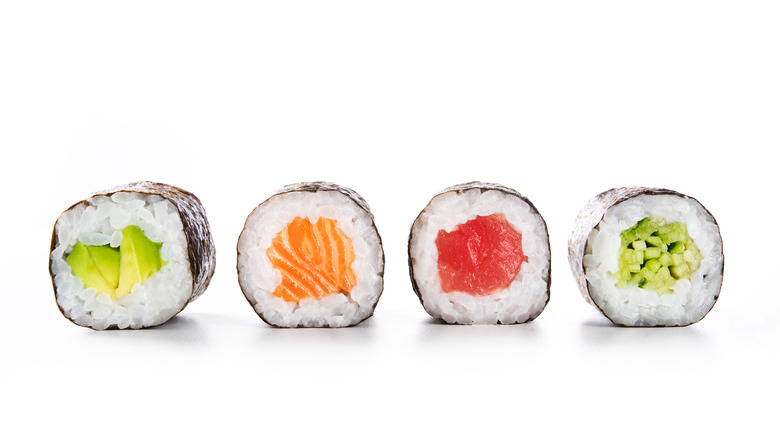Never Try Reheating This Sushi And Thank Us Later
Imagine yourself arriving at a party and noticing there's a large table of different types of sushi. Most of them are maki rolls, the traditional sushi with fish and veggies rolled in rice or seaweed (via McCormick), waiting to be dipped into eel sauce, and boosted with wasabi. You may be thrilled about devouring these fresh seafood bites, but the host is probably wondering what they will do with all the leftovers.
Most of the time, we just put it into the fridge and eat it the day after, but cold temperatures often mute the flavors. "Sushi rice becomes rock hard in the fridge," said a Redditor, while another user said that after trying microwaving the leftovers, "it never tastes as good as the day before. Like, not even a little worse, but big time downgrade." Like them, many wonder how exactly to store sushi and make it taste good the day after.
According to Howsushi, sushi should only be eaten fresh, but normally people prefer to save leftovers instead of throwing them away. Yes, chillers and freezers are the best way to store it, but heating it's out of the picture. However, there are actually some clever tricks to having sushi the next day, with simple utensils or none.
Defrost your sushi slowly instead of reheating it
Howsushi explains that leftover sushi should be stored in a freezer or chiller. If it's frozen, try moving it first to a refrigerator eight hours ahead of eating it again. Then, transfer it to a countertop in a room with a decent temperature, around 27 to 35 degrees Celsius (81 to 95 degrees Fahrenheit). After about 15 to 30 minutes of thawing, it should be good to go. The plate should also be away from sunlight or any type of heat to avoid the sushi getting too chewy or soggy. Heating overcooks ingredients and dries other condiments.
Although the flavor will never be like the original, you can also try using a paper towel, a bit of lemon juice, rice vinegar, and soy sauce, as Tastylicious suggests. Before refrigerating your leftovers, soak your paper towel with a bit of each ingredient, and wrap the sushi in the towel in an airtight container for a couple of hours. This trick preserves flavors and textures. Also, use this type of container for storing wasabi, so it stays fresh longer.
If you are against eating cold sushi, you can pan-fry the fish part or deep-fry the whole roll, but that will alter the flavor.
Hopefully, slowly defrosting your maki will allow you to enjoy your sushi again. Or, next time, try calculating better how much sushi each person would eat so the rolls can be enjoyed the freshest way possible. Just stay away from heating!

